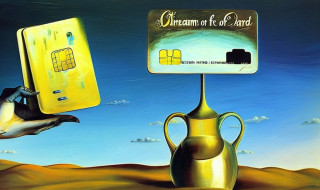In Part 5 we learned:
- Every general ledger account has a category - possible values are Income, Expenditure, Asset and Liability.
- Every category has a type - possible values are Flow and Balance. Type determines which Financial Report (Income Statement or Balance Sheet) any given GLA aggregates into.
Below we learn about a 'special' general ledger account called Retained Income and how we use this account to assist in the creation of the Balance Sheet.
#30 - GLA Categories drive Financial Reports
Lets revisit our five events from #21 - assume these are the only events encountered by our organisation while trading:
| Event | Description | Movement | Journal |
|---|---|---|---|
| EVENT‑1 | Sale for cash | Revenue → 200 → Bank | Revenue (200) Bank 200 |
| EVENT‑2 | Sale on credit | Revenue → 64 → Customer | Revenue (64) Customer 64 |
| EVENT‑3 | Customer pays off debt | Customer → 64 → Bank | Customer (64) Bank 64 |
| EVENT‑4 | Pay electricity bill | Bank → 13 → Electricity | Bank (13) Electricity 13 |
| EVENT‑5 | Record rent owed to landlord | Landlord → 38 → Rent | Landlord (38) Rent 38 |
The transactions relating to these events follow below:
| Reference | GLA | Amount |
|---|---|---|
| Event-1 | Revenue | (200) |
| Event-1 | Bank | 200 |
| Event-2 | Revenue | (64) |
| Event-2 | Customer | 64 |
| Event-3 | Customer | (64) |
| Event-3 | Bank | 64 |
| Event-4 | Bank | (13) |
| Event-4 | Electricity | 13 |
| Event-5 | Landlord | (38) |
| Event-5 | Rent | 38 |
| Net: 0 |
As discussed above, the type and Financial Report for each distinct general ledger account is easily resolved from the GLA category:
| GLA | Category | Type | Report | |||
| Bank | => | Asset | => | Balance | => | Balance Sheet |
|---|---|---|---|---|---|---|
| Landlord | => | Liability | => | Balance | => | Balance Sheet |
| Customer | => | Asset | => | Balance | => | Balance Sheet |
| Rent | => | Expenditure | => | Flow | => | Income Statement |
| Electricity | => | Expenditure | => | Flow | => | Income Statement |
| Revenue | => | Income | => | Flow | => | Income Statement |
#31 - Financial Reports
We aggregate by category - under the Income Statement, we select and arrange all categories of type flow:
Income Statement (covering the period when trading commenced until today)
| Income | 264 |
| Expenditure | (51) |
| Net Income | 213 |
And under the Balance Sheet, we select and arrange all categories of type balance:
Balance Sheet (as at today)
| Assets | 251 |
| Liabilities | (38) |
| 213 | |
| Represented By: | |
| Retained Income | 213 |
#32 - Retained Income is a 'fake' GLA
Our balance sheet 'balanced' because Assets minus Liabilities [213] equates to Retained Income [213]. But where under #30 is the GLA "Retained Income" defined?
Good question.
It is excluded from our chart of accounts because it never participates in day-to-day business activities. You can confirm the absence of Retained Income from the complete set of business events, 1 through 5 under #30 above.
So here's what happened:
- Derivation of the Income Statement is less complicated than the Balance Sheet - our report for the period ending "today", subtracts expenditure from income resulting in the reporting line item, Net Income.
- You can simultaneously view the Net Income in the Income Statement as a balance at the end of the period (as at "today") by copying this line amount to a 'special' GLA called Retained Income - and that is exactly what we do when preparing financial reports: we take the net flow and pretend that it is a balance that accumulates in Retained Income.
Going forward, simply treat Retained Income as a general ledger account that never participates in day-to-day journals.
Summary
In this part, we learned that Retained Income is a 'special' general ledger account. We confine its use to straddling the land of flow and balance thereby enabling the balancing of the Balance Sheet.
In this and the previous parts, we focused our attention on the categorisation of movements largely assuming all such movement took place in a single period. In the next part we will cover the implications of accounting for movement across more than one period.
